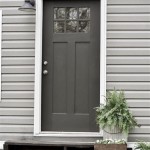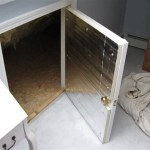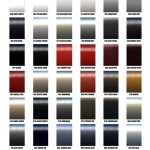What Do I Need To Paint The Interior Of My House?
Painting the interior of a house is a significant undertaking, requiring careful preparation and the right equipment. Success hinges not only on technique but also on assembling the necessary tools and materials before commencing the project. A well-stocked toolkit prevents mid-project interruptions and ensures a professional-looking finish. This article provides a comprehensive list of essential items necessary for a successful interior painting project.
Essential Painting Tools
The foundation of any painting project lies in the quality of the painting tools. These tools facilitate the application of paint smoothly and efficiently, contributing significantly to the final aesthetic outcome.
Paintbrushes: Paintbrushes are indispensable for cutting in edges, painting trim, and reaching tight corners. A variety of brush sizes and shapes are advisable. Angled brushes, typically 2-3 inches wide, excel at cutting in along walls and ceilings. Smaller brushes, around 1-1.5 inches, are ideal for detailed work around windows and door frames. The choice between synthetic and natural bristle brushes depends on the type of paint being used. Synthetic brushes are generally recommended for latex paints, while natural bristle brushes are better suited for oil-based paints. Investing in high-quality brushes ensures longevity and a smoother paint application, minimizing brushstrokes and maximizing paint coverage.
Paint Rollers: Paint rollers are essential for covering large surfaces quickly and efficiently. The choice of roller nap length depends on the texture of the wall. Smooth walls benefit from rollers with a short nap (1/4-3/8 inch), while textured walls require a longer nap (1/2-3/4 inch) to reach into crevices. A standard 9-inch roller is suitable for most walls, but a smaller 4-inch roller is useful for painting smaller areas or tight spaces. A roller frame and extension pole are also necessary. The extension pole significantly reduces the need for bending and stretching, making the painting process more comfortable and efficient, especially when painting ceilings and high walls.
Paint Trays and Liners: Paint trays provide a convenient reservoir for holding paint and facilitating even paint distribution onto the roller. Disposable paint tray liners simplify cleanup and prevent the need for washing the tray after each use. Liners are available in various materials, including plastic and foil, and are a cost-effective way to maintain a clean and efficient painting workspace. Consider purchasing multiple liners to accommodate different paint colors or projects.
Paint Scrapers: Paint scrapers are crucial for removing loose or flaking paint before painting. A variety of scraper sizes and shapes are available, allowing for effective removal of paint from different surfaces and crevices. A flexible putty knife can also serve as a scraper for smaller areas. Thoroughly scraping the surface ensures proper adhesion of the new paint layer, preventing peeling and bubbling in the future.
Painter's Tape: Painter's tape is used to create clean, crisp lines along trim, windows, doors, and other areas that need to be protected from paint. Blue painter's tape is a common choice, but different types are available for specific surfaces and durations. For example, delicate surface tape is designed for use on freshly painted walls or wallpaper, while exterior tape is more resistant to sunlight and moisture. Apply the tape carefully, pressing firmly along the edges to prevent paint bleed-through. Remove the tape promptly after painting, ideally while the paint is still slightly wet, to avoid pulling off the new paint.
Preparation and Protection Equipment
Proper preparation is critical for achieving a professional-looking paint job. Cleaning, patching, and protecting surfaces before painting ensures optimal paint adhesion and prevents damage to existing features.
Drop Cloths: Drop cloths are essential for protecting floors, furniture, and other surfaces from paint splatters and spills. Canvas drop cloths are durable and reusable, making them a worthwhile investment for frequent painters. Plastic drop cloths are a more economical option for smaller projects or areas where spills are more likely. Secure the drop cloths with painter's tape to prevent them from shifting during the painting process. Consider overlapping drop cloths to provide comprehensive coverage.
Spackle or Joint Compound: Spackle or joint compound is used to fill holes, cracks, and imperfections in walls and ceilings. Choose a product that is suitable for the type of surface being repaired. Lightweight spackle is easy to sand and ideal for small holes, while joint compound is better suited for larger repairs. Apply the spackle or joint compound with a putty knife, smoothing it flush with the surrounding surface. Allow the repair to dry completely before sanding.
Sandpaper and Sanding Block: Sandpaper is used to smooth rough surfaces, remove imperfections, and prepare surfaces for painting. A sanding block provides a comfortable and ergonomic grip for sanding. Different grits of sandpaper are used for different purposes. Coarse grit sandpaper (80-100) is used for removing old paint or rough surfaces, medium grit sandpaper (120-180) is used for smoothing surfaces, and fine grit sandpaper (220-320) is used for final sanding before painting. After sanding, wipe down the surface with a damp cloth to remove dust.
Primer: Primer is a crucial step in the painting process. It creates a uniform surface for the paint to adhere to, seals porous surfaces, and blocks stains. Choose a primer that is compatible with the type of paint being used. Oil-based primers are effective at blocking stains and sealing wood, while latex primers are better suited for drywall and other porous surfaces. Apply the primer evenly, using a brush or roller. Allow the primer to dry completely before applying the paint.
Cleaning Supplies: Cleaning the surfaces before painting is essential for removing dirt, dust, and grease, which can interfere with paint adhesion. A mild detergent and water solution is typically sufficient for cleaning walls and ceilings. For greasy or stained areas, use a stronger cleaner, such as trisodium phosphate (TSP). Rinse the surfaces thoroughly with clean water and allow them to dry completely before painting.
Safety Equipment and Miscellaneous Items
Safety is paramount when undertaking any painting project. Protecting oneself from paint fumes and potential hazards is crucial for personal well-being. Likewise, certain miscellaneous items streamline the painting process and contribute to a more organized and efficient workflow.
Respirator or Mask: A respirator or mask protects against inhaling paint fumes and dust particles. Choose a respirator with a particulate filter for sanding and a vapor filter for painting. Ensure the respirator fits properly and is worn correctly throughout the painting process. Proper ventilation is also important, so open windows and doors whenever possible.
Gloves: Gloves protect hands from paint and chemicals. Disposable gloves are a convenient and economical option, while reusable gloves offer more durability. Choose gloves that are resistant to the type of paint being used. Wear gloves throughout the painting process, including during preparation and cleanup.
Eye Protection: Safety glasses or goggles protect eyes from paint splatters and dust particles. Wear eye protection throughout the painting process, especially when sanding or working overhead.
Ladder or Step Stool: A ladder or step stool is necessary for reaching high walls and ceilings. Choose a ladder that is stable and appropriate for the height being reached. Follow all safety precautions when using a ladder, including ensuring it is placed on a level surface and never overreaching. For smaller areas, a step stool may be sufficient.
Paint Can Opener: A paint can opener is a small but essential tool for opening paint cans without damaging the lid. Using a screwdriver or other tool to open a paint can can damage the lid and make it difficult to close the can properly. A paint can opener is designed to pry the lid open easily and cleanly.
Paint Stirrer: A paint stirrer is used to thoroughly mix the paint before and during painting. Stirring the paint ensures that the pigments are evenly distributed, resulting in a consistent color and finish. Use a paint stirrer that is long enough to reach the bottom of the paint can. Stir the paint for several minutes before each use.
Rags or Paper Towels: Rags or paper towels are essential for cleaning up spills, wiping brushes, and other general cleaning tasks. Keep a supply of rags or paper towels on hand throughout the painting process.
Utility Knife: A utility knife is useful for scoring wallpaper, cutting caulk, and other general tasks. Keep a sharp blade in the utility knife for optimal performance.
Caulk and Caulk Gun: Caulk is used to seal gaps and cracks around windows, doors, trim, and other areas. Choose a caulk that is paintable and suitable for the type of surface being sealed. A caulk gun is used to apply the caulk evenly and precisely. Practice using the caulk gun on a scrap piece of material before applying it to the actual surface.
Lighting: Adequate lighting is crucial for ensuring a high-quality paint job. Use a bright work light to illuminate the area being painted. This will help to identify imperfections and ensure that the paint is applied evenly. Consider using multiple work lights to eliminate shadows.
Having these tools and materials on hand will significantly improve the efficiency and quality of the interior painting project. Careful planning and preparation are key to achieving a professional and aesthetically pleasing result.

Diy Guide How To Paint My House Inside Successfully Flora Brothers Painting

How To Pick The Best Paint Colors For Your Whole House Lantern Lane Designs

Best Interior Paint Colors Whole House Color Scheme Abby Organizes

2 Ways To Elevate Your Home S Style With Interior Paint This Fall Kennedy Painting

Best Interior Paint Colors Whole House Color Scheme Abby Organizes

How Often Should I Repaint My House Interior

Home Painting Ideas Tips And Top Reasons To Hire A Professional Painter Pressure Washing Massachusetts Instabrite

How Often Should I Repaint The Interior Of My Home

How Should I Prepare My Home Interior For The Painters

Cost Of Painting A House Interior Comprehensive Guide
Related Posts








